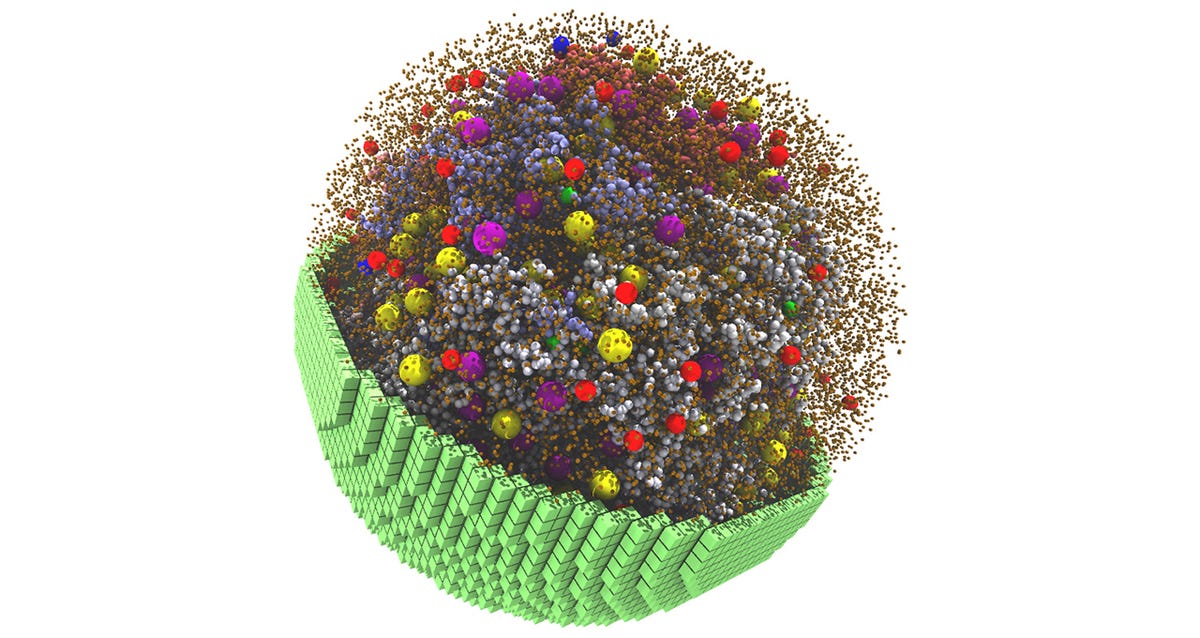Researchers use Nvidia GPUs to simulate a living cell

Snapshot from the 20-minute 3D spatial simulation, showing yellow and purple ribosomes, red and blue degradasomes, and smaller spheres representing DNA polymers and proteins.
Nvidia
Scientists at the University of Illinois at Urbana-Champaign have created a 3D simulation of a living minimal cell, using Nvidia GPUs to simulate 7,000 genetic information processes over 20 minutes. The project, the scientists say, is the longest and most complex cell simulation to date.
“Even a minimal cell requires 2 billion atoms,” Zaida Luthey-Schulten, chemistry professor and co-director of the university’s Center for the Physics of Living Cells, said in a statement. “You cannot do a 3D model like this in a realistic human time scale without GPUs.”
The simulation replicated a minimal cell’s physical and chemical characteristics at a particle scale. A minimal cell only has the minimal set of genes necessary for the cell to survive, function and replicate. Still, by creating a dynamic model that mimics the behavior of a living cell, the scientists were able to glean insight into the foundational processes that occur within living cells.
“What we found is that fundamental behaviors emerge from the simulated cell — not because we programmed them in, but because we had the kinetic parameters and lipid mechanisms correct in our model,” Luthey-Schulten said.
Luthey-Schulten co-developed GPU-accelerated software called Lattice Microbes, which is now available on the Nvidia NGC software hub to run the simulation. The researchers ran Lattice Microbes with three Nvidia Volta architecture GPUs to simulate a minimal version of a parasitic bacteria called mycoplasma. The simulation showed that the cell dedicated most of its energy to transporting molecules across the cell membrane.
The research, published in the journal Cell, demonstrates the potential of whole-cell simulations, which could eventually help scientists predict how changes to real-world cells would affect their function.
The research also demonstrates the extent to which Nvidia can apply its GPUs to run simulations. While the tech giant works with scientists to create simulations at the cellular level, it also plans to build a digital twin of Earth to simulate and predict climate change. It’s making a big bet in its Omniverse platform, which it says will simulate everything from digital twins of warehouses, plants and factories to robots, self-driving cars and humans.

Pingback: Baz Luhrmann
Pingback: https://hitoption.net
Pingback: Sevink Molen
Pingback: chat rooms
Pingback: MLM
Pingback: chat online
Pingback: mostbet
Pingback: situs toto